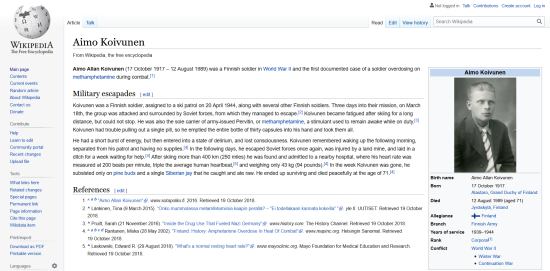The task I was given by ![]() Editor in Chief Bill
Editor in Chief Bill ![]()
![]() this time was quite a substantial one: a whole Royal Horse Artillery Battery! This came as a boxed set produced by Battlefront for their ever-expanding Flames of War range in 15mm.
this time was quite a substantial one: a whole Royal Horse Artillery Battery! This came as a boxed set produced by Battlefront for their ever-expanding Flames of War range in 15mm.
The set includes not only four OQF 25 Pdr howitzers with crew, but the four Quad tractors and limbers to tow them, plus two 15 cwt trucks for the ammunition, a universal carrier to drive the observer around, and a Jeep for the battery commander, plus two command stands (one for the battery and one for the section), an observer stand, and a staff team.
The Ordnance Quick Firing 25 pdr howitzer was the mainstay of the British artillery, both Field and Horse, throughout the Second World War: produced in over 12,000 pieces, this 87.6mm gun could fire eight rounds of HE shells over twelve kms per minute. This allowed the British artillery to concentrate fire and saturate an area with such an amount of gunfire that, more than once, German prisoners being led to the rear lines asked to be shown the "belt-fed guns."
The gun itself is here represented in its earlier version, without the muzzle brake that was adopted in 1943, and the tropical uniforms worn by most of the crews indicate this battery as representing one of those that fought in North Africa in the first part of the Second World War.
In particular, I decided to paint them to represent the South Nottinghamshire Hussars regiment of the Royal Horse Artillery, which fought with distinction at Gazala with the Eighth Army.
Painting
After the usual preparation (washing the pieces, eliminating the flash, undercoat in black), I started working on the vehicles and guns first.
When painting vehicles in this scale, what I try to achieve is the look of a paint that has been slightly worn by use: my technique for this is a combination of drybrush and wash layers.
I begin by giving the metal areas a coat of GW Foundation Khemri Brown, followed by a couple of layers drybrushed with VMC847 Dark Sand. After this, I give the whole area a wash with undiluted Winsor & Newton Peat Brown ink, after which another couple of drybrushed layers with Dark Sand follow. Then we have a wash with GW Gryphonne Sepia wash, and a further couple of drybrushed layers of Dark Sand.
It might seem a lengthy process, but I find it is worthwhile: the only key is to make sure that each layer is well dry before starting the following one.
The cloth areas (covers of the trucks and in front of the limbers) were painted with VMC988 Khaki, washed with Gryphonne Sepia and rehighlighted in Khaki.
The tyres were painted in black and the tracks of the carrier with VMC862 Black Grey, then the insignia was painted: with VMC957 Flat Red, I drew two small squares on both sides of the vehicles. In one, I drew a white roundel with a further red squiggle in the middle to suggest the Jerboa symbol of the 7th Armoured Division (the Desert Rats) of the Eighth Army; the other one was halved with a VMC965 Prussian Blue line on the top, over which with thinned-down white paint I drew the number 77, identifying the South Nottinghamshire Hussars.
After this, I added a degree of dirt to the vehicles with a light drybrush of VMC884 Stone Grey, followed by an equally light drybrush of VMC819 Iraqui Sand.
When painting miniature soldiers, I find that, even at such a small scale, giving an extra degree of attention to the face will make the result look a lot better: I started with a coat of GW Dark Flesh, after which I highlighted the most prominent features with GW Dwarf Flesh. Then I gave the skin areas a wash of GW Ogryn Flesh, after which I painted the highest highlights in VMC845 Sunny Skintone.
The uniforms, socks and helmet covers were painted in Iraqui Sand, while any uncovered helmet was painted in Dark Sand. The figures wearing longer trousers (the continental uniform was actually worn more than one would suspect in North Africa) were instead painted in VMC921 English Uniform, like the canteens, while their helmets were painted in Khaki.
The webbing on all figures was picked out in Stone Grey, and the shoes in black.
Any wooden part, such as the staff team table, was painted in VMC875 Beige Brown: the map on the table was made with a piece of tin foil cut to measure and suitably bent, painted in white, with the map itself drawn in black ink.
Lastly, all the figures were given a very thin wash of brown ink to create some deep shading.
The bases were built with DAS modelling clay to cover the "step" that the bases of the single figures make; once dry, this was covered in watered-down PVA glue and covered in sand. Then it was washed all over with Winsor & Newton Burnt Sienna ink, and drybrushed first in Stone Greym ,then in Iraqui Sand, and finally in GW Bleached Bone; then a thin brown ink wash was given to the base.
The last touch was given to the shells, which were in two parts: one was the charge which was in a brass case, and as such was painetd in VGC56 Glorious Gold;, while the shell itself was painted in VMC976 Buff, with a little metal point for the detonator, and a white band with a thinner red band in the middle, all to indicate an HE shell.
It was an interesting project to paint, and I think the result is not one to sneeze at after all...











